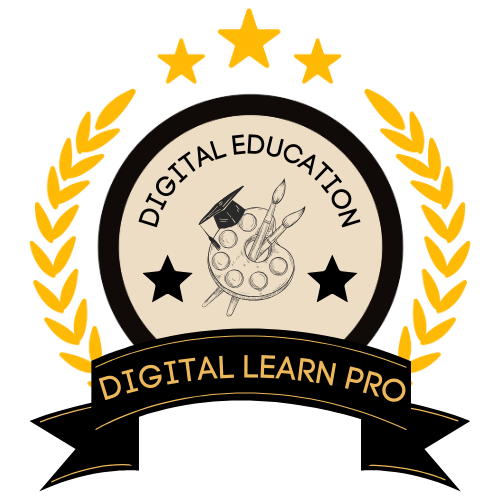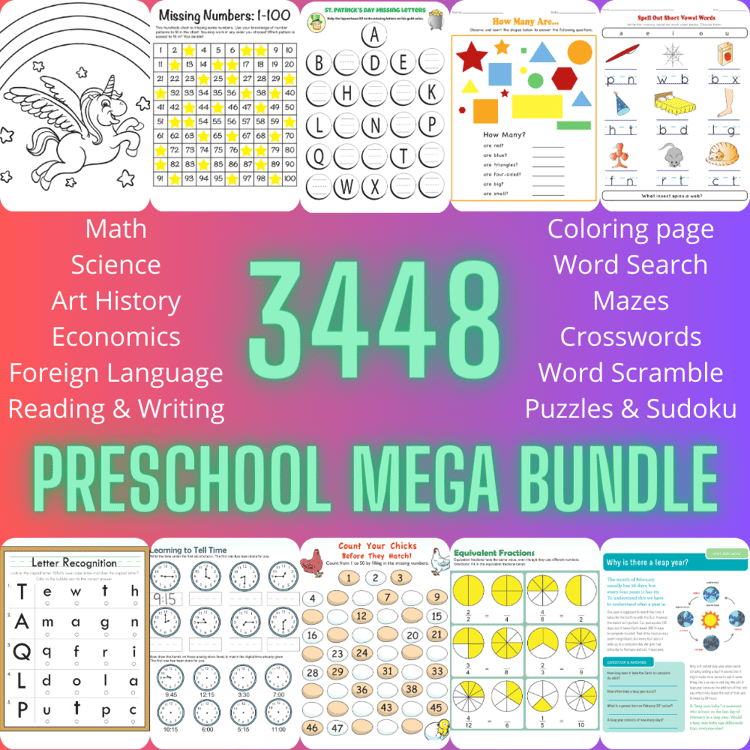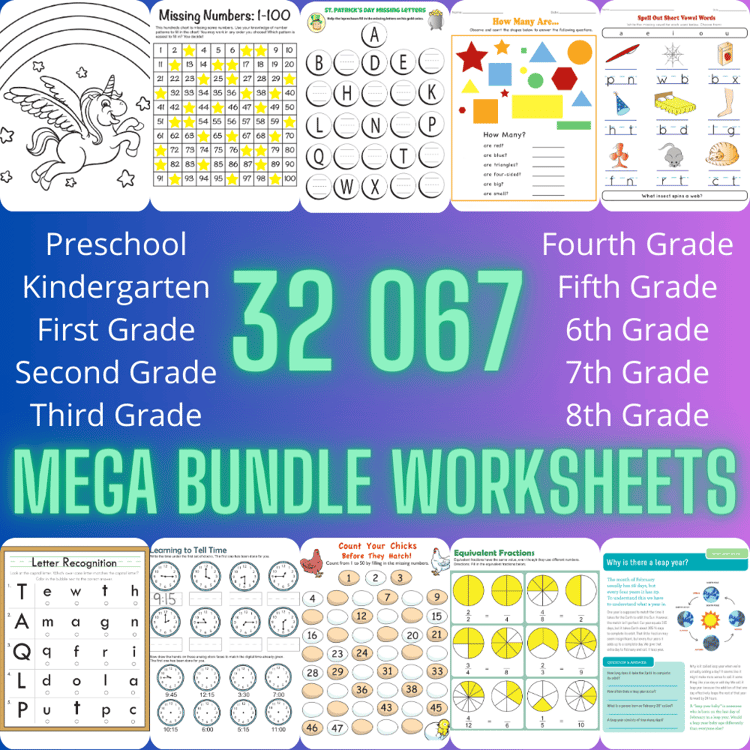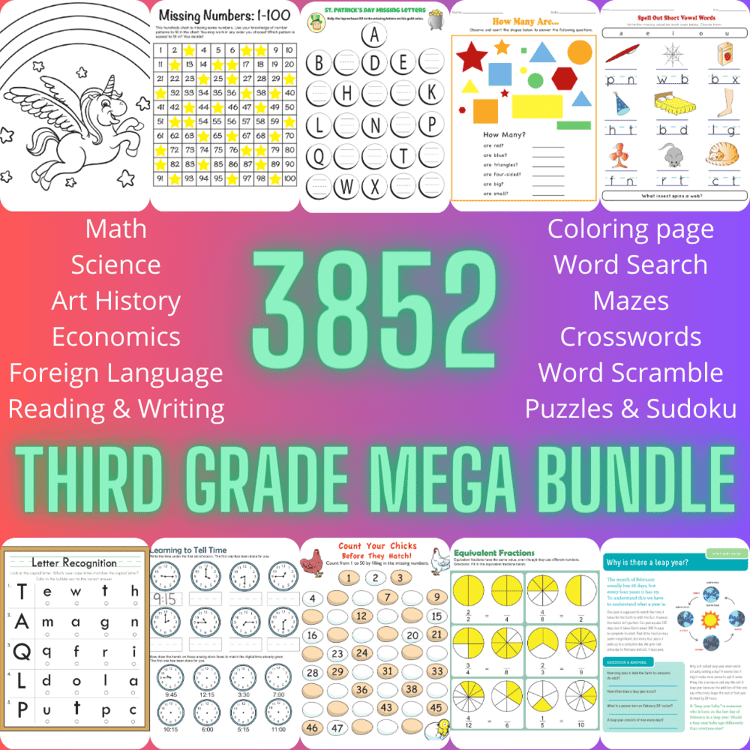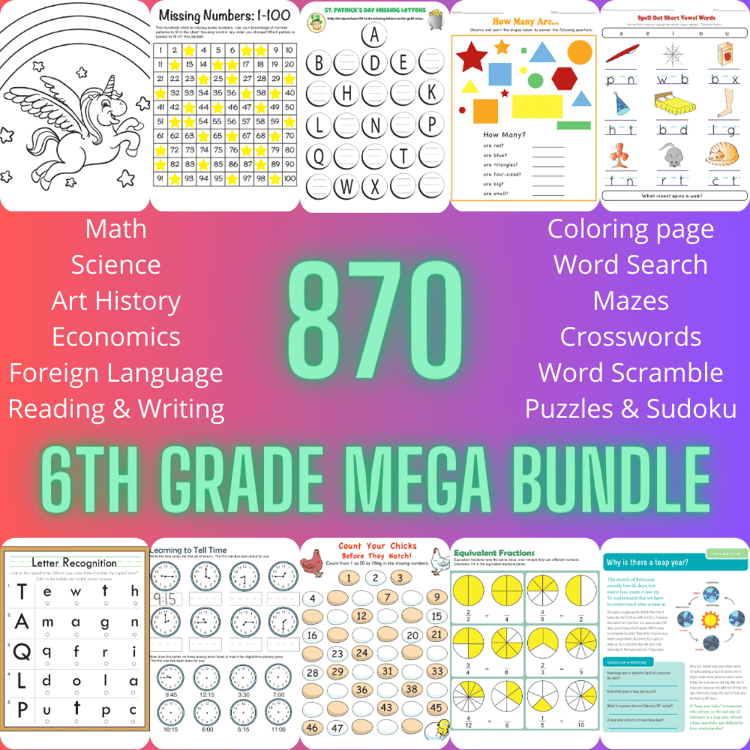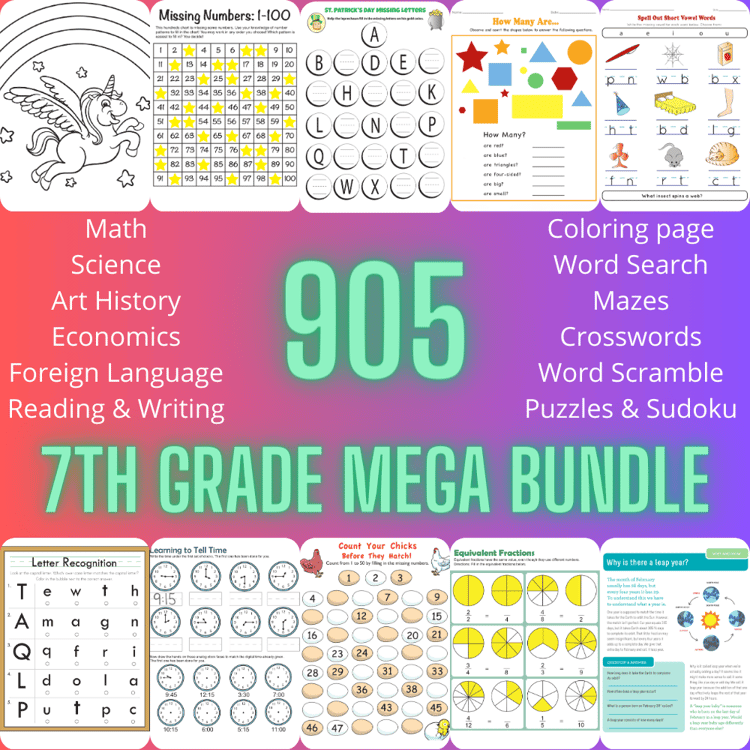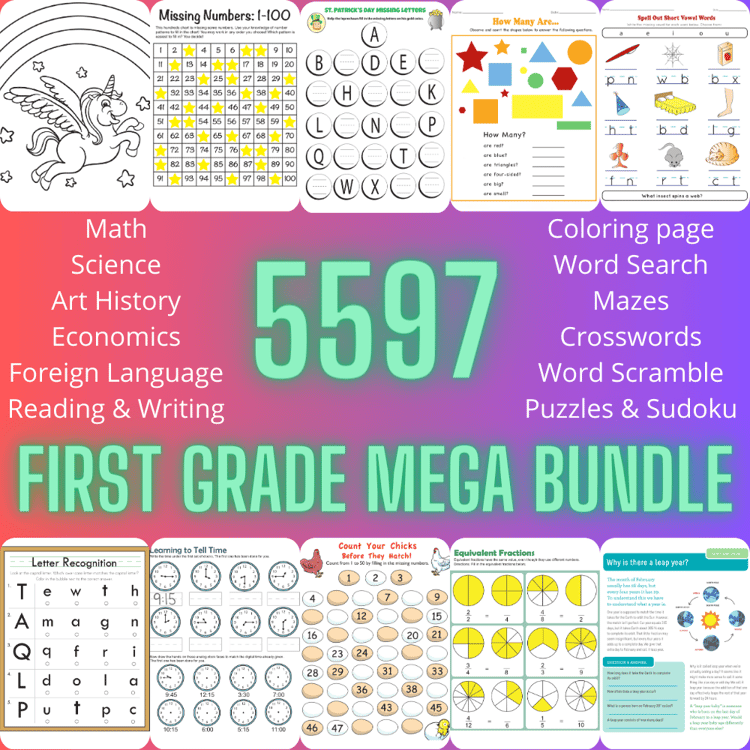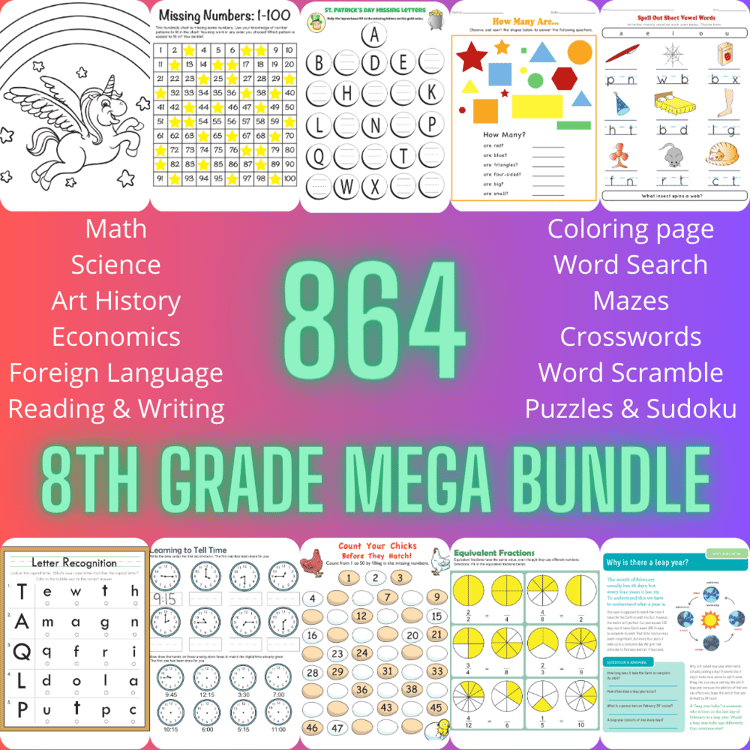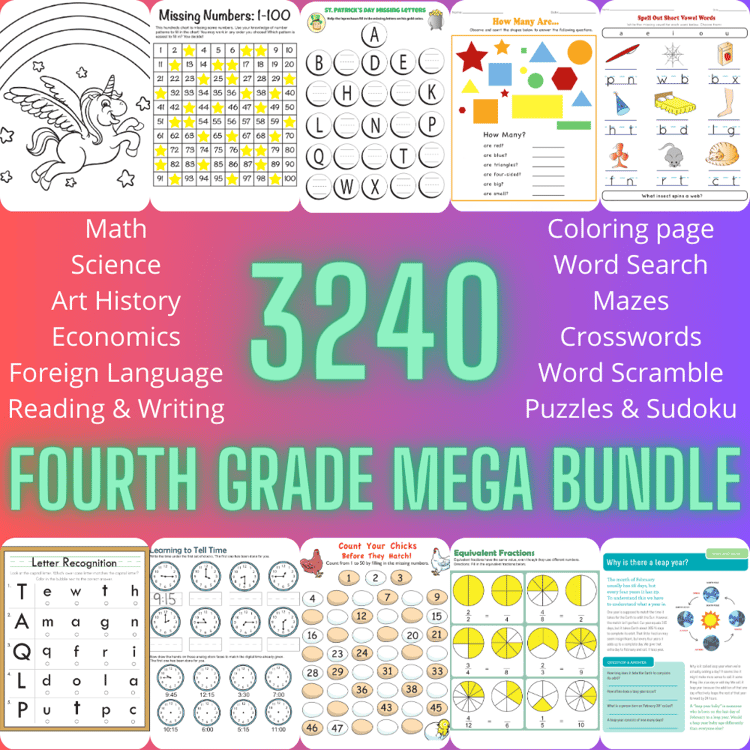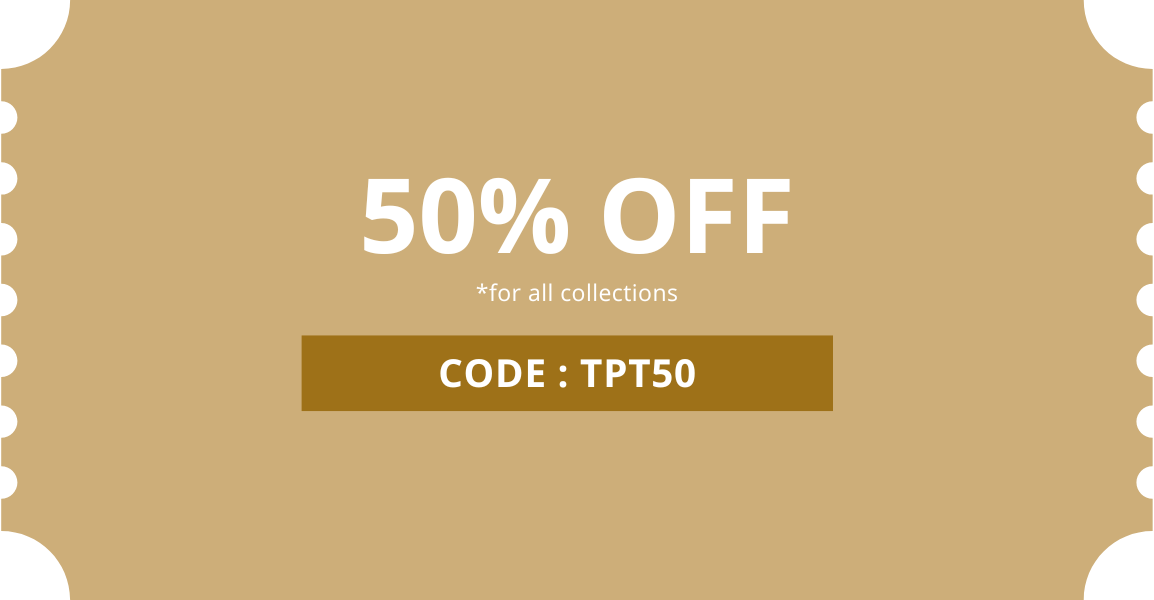
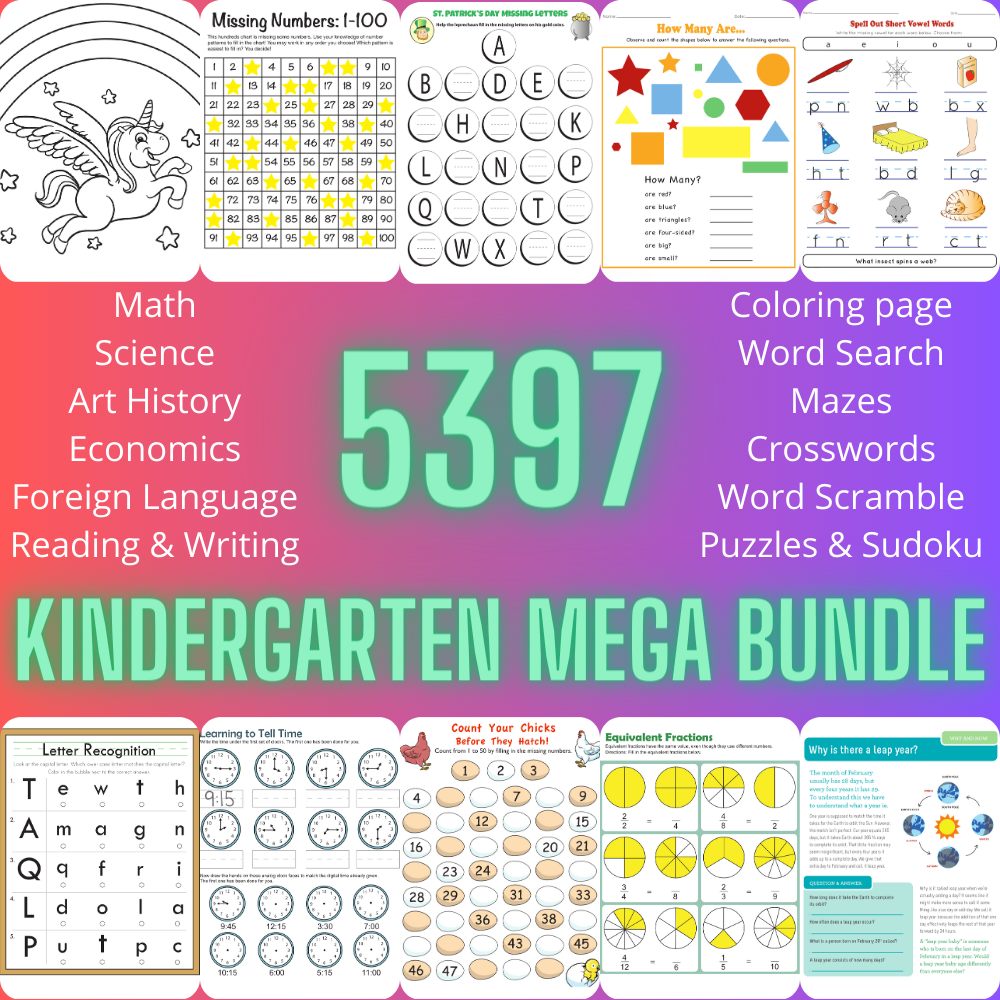
Kindergarten Mega Bundle
Leveraging Teacher Resources: Worksheets and Printables for Kindergarten
In the realm of early childhood education, the utilization of **teacher resources** is paramount to fostering a nurturing and enriching learning environment for kindergarten students. Among these resources, **worksheets and printables** stand out as versatile tools that cater to the diverse needs and learning styles of young learners. In this comprehensive guide, we explore the myriad benefits and applications of **teacher resources**, with a special focus on the invaluable role played by **worksheets and printables** in kindergarten education.
The Significance of Teacher Resources in Kindergarten Education
Enhancing Learning Engagement
**Teacher resources**, including **worksheets and printables**, serve as catalysts for engaging kindergarten students in meaningful learning experiences. Through interactive activities and visually stimulating materials, these resources captivate children's attention and ignite their curiosity, thereby fostering a deep-seated enthusiasm for learning. By providing educators with a rich array of **worksheets** and **printables** spanning various subjects and themes, teachers can create dynamic lessons that resonate with the diverse interests and abilities of their students.
Supporting Differentiated Instruction
In a kindergarten classroom characterized by a wide spectrum of learning needs and abilities, **teacher resources** play a pivotal role in supporting differentiated instruction. **Worksheets** tailored to different skill levels and learning objectives enable teachers to provide targeted support to students who may require additional reinforcement or extension activities. Likewise, **printables** that offer open-ended prompts and creative outlets empower students to explore concepts at their own pace and in accordance with their individual interests, ensuring that every child receives personalized attention and scaffolding as needed.
Fostering Holistic Development
Beyond academic proficiency, **teacher resources** contribute to the holistic development of kindergarten students by nurturing their cognitive, social, emotional, and physical growth. **Worksheets** that promote critical thinking, problem-solving, and fine motor skills help lay the foundation for academic success while fostering essential cognitive abilities. Meanwhile, **printables** that encourage collaboration, creativity, and self-expression foster social-emotional competence and cultivate a sense of belonging within the classroom community. By integrating these multifaceted resources into daily instruction, educators can create a well-rounded learning experience that addresses the diverse needs of the whole child.
Unveiling the Power of Worksheets in Kindergarten Education
Reinforcing Core Concepts
**Worksheets** serve as invaluable tools for reinforcing core concepts and skills in kindergarten education. Whether it's practicing letter recognition, number sense, phonics, or early math skills, these structured activities provide students with opportunities to consolidate their learning in a hands-on and interactive manner. By incorporating engaging visuals, relatable contexts, and scaffolded exercises, **worksheets** empower students to master foundational concepts while building confidence in their abilities.
Promoting Critical Thinking and Problem-Solving
In addition to reinforcing academic content, **worksheets** play a crucial role in promoting critical thinking and problem-solving skills among kindergarten students. Through activities that require logical reasoning, pattern recognition, and analysis, these resources challenge students to think independently and apply their knowledge in real-world contexts. Whether it's solving puzzles, completing sequencing tasks, or exploring cause-and-effect relationships, **worksheets** encourage students to approach learning with curiosity and resilience, laying the groundwork for lifelong learning and academic success.
Cultivating Fine Motor Skills and Handwriting
Another key benefit of **worksheets** in kindergarten education is their contribution to the development of fine motor skills and handwriting proficiency. Activities such as tracing lines, coloring within the lines, and cutting along dotted paths help refine students' hand-eye coordination, dexterity, and pencil grip. By engaging in these purposeful activities, students not only strengthen their ability to manipulate objects with precision but also lay the foundation for fluent and legible handwriting, an essential skill for academic and personal expression.
Maximizing the Potential of Printables in Kindergarten Education
Encouraging Creativity and Self-Expression
**Printables** offer endless opportunities for creativity and self-expression in the kindergarten classroom. From thematic coloring pages and craft templates to storytelling prompts and art projects, these versatile resources inspire students to unleash their imagination and showcase their unique talents. By providing open-ended prompts and adaptable materials, **printables** empower students to express themselves creatively while developing essential skills such as visual literacy, spatial awareness, and artistic expression.
Facilitating Hands-On Exploration
One of the distinct advantages of **printables** is their ability to facilitate hands-on exploration and discovery in kindergarten education. Whether it's conducting science experiments, creating sensory bins, or building models, these resources immerse students in experiential learning opportunities that engage their senses and spark curiosity. By incorporating tactile elements, real-world contexts, and interactive components, **printables** transform abstract concepts into tangible experiences that resonate with young learners, fostering a deeper understanding and appreciation of the world around them.
Promoting Collaboration and Communication
Beyond individual exploration, **printables** can also foster collaboration and communication skills among kindergarten students. Whether it's collaborating on group projects, participating in shared reading activities, or engaging in dramatic play scenarios, these resources encourage students to work together, communicate effectively, and share ideas with their peers. Through collaborative learning experiences, students not only develop essential social skills but also gain a deeper appreciation for teamwork, cooperation, and community building.
Conclusion
In conclusion, **teacher resources**, particularly **worksheets and printables**, play a pivotal role in shaping the educational journey of kindergarten students. From enhancing learning engagement and supporting differentiated instruction to fostering holistic development and promoting critical thinking, these versatile tools empower educators to create dynamic and enriching learning environments where every child can thrive. By leveraging the power of **worksheets** to reinforce core concepts and maximizing the potential of **printables** to inspire creativity and exploration, educators can unlock the full potential of their students and nurture a lifelong love of learning.
